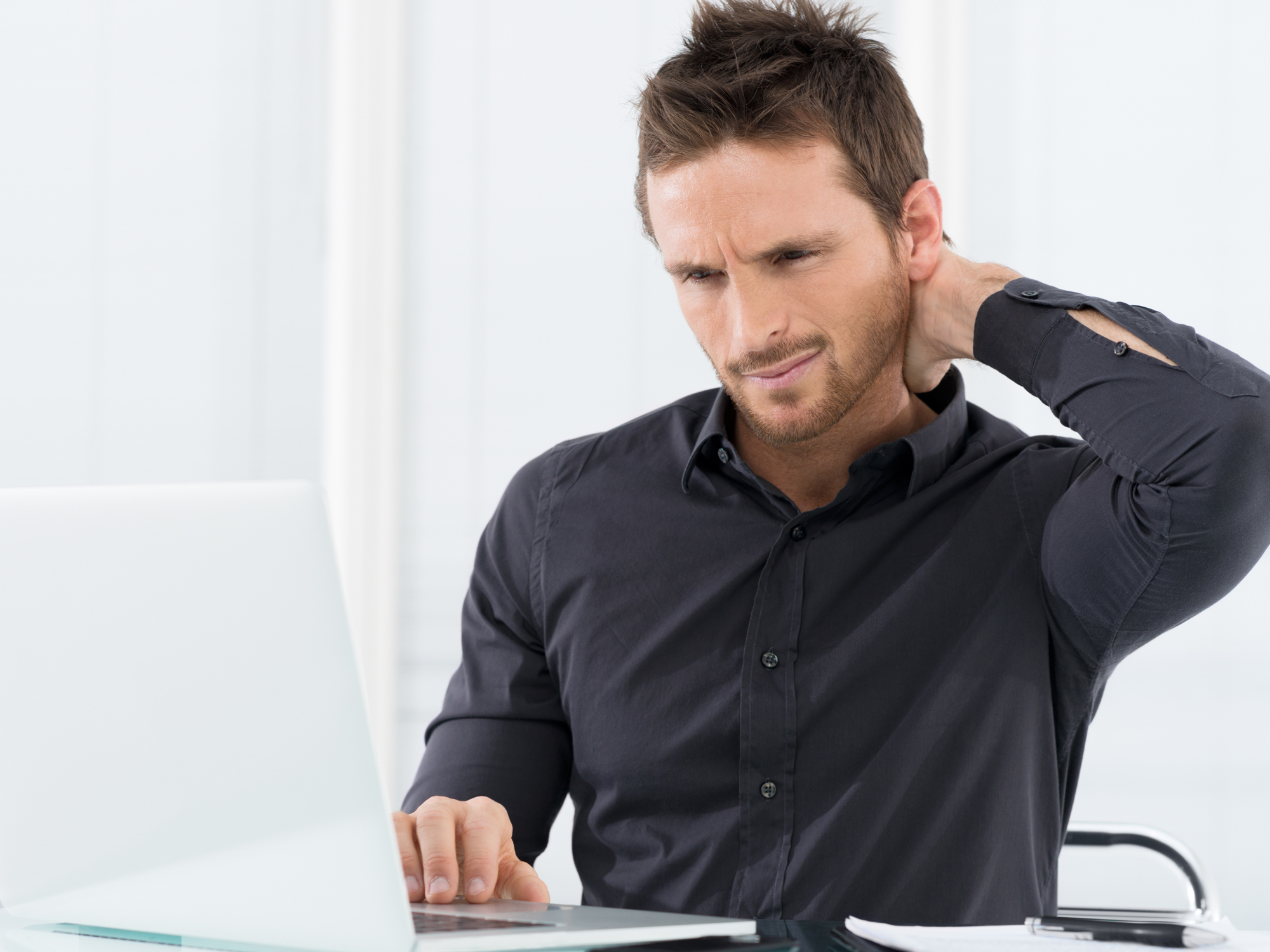Get Easy Health Digest™ in your inbox and don’t miss a thing when you subscribe today. Plus, get the free bonus report, Mother Nature’s Tips, Tricks and Remedies for Cholesterol, Blood Pressure & Blood Sugar as my way of saying welcome to the community!
The easy way to get rid of a pain in the neck

Everyone suffers from neck pain at some point and there are many reasons why…
If your pain is chronic (long term), stress may be to blame. The next culprit would be poor posture habits, especially seated posture and the posture your body takes when you sleep. Do you look down at your smart phone a lot? That’ll do it too.
When it comes to acute pain (the kind that comes on suddenly), stiffness and strain is often part of the “weekend warrior” scenario, where after a week of sedentary living most of us tend to overdo the fun or the workouts. And lastly, traumatic injury from falls and accidents, whiplash and worse, also cause neck tightness and pain.
But when it hurts the last thing you want to do is anything strenuous.
In today’s video article my good friend Dr. Christopher M. Viggiano (Dr. V) will share with you a unique and gentle exercise using sequential eye, neck and torso movement to loosen tight inflamed muscle and relieve the pain.
Let’s have a look…
Steven has had many accidents, leading to chronic neck pain, eye strain, vertigo and headaches. Dr. Viggiano will show some simple maneuvers that you can do at home, to help relieve symptoms of neck pain and stress and increase range of motion.
In addition to the biomechanical movements, Dr. V brings in elements from Chinese medicine energy theory. He shows you specific acu-points on an “acupuncture/meridian model” that are of interest here, that will help alleviate stress and open blocked energy in the head; in part caused by the blockage of neck energy.
Special points…
The first point is called Bai Hue and its located at the top of the head, in line with the ears if you were to draw a line from the to the top of the head. This is like a chimney, where heat and blocked energy can be released. Have you ever been so stressed or angry that you face turned red and your head felt like the pressure in it would explode? Opening this point helps “let the steam out” so to speak.
The second point of importance here is known as Yin Tang, or more commonly as the “third eye.” It is located in the depression just above the center of the eyebrows, above the bridge of the nose. Opening this energy gate will help alleviate stress.
The set up…
You can do this alone or with a partner. In the video, Dr. V uses his finger to lead the patient through the exercise. But if you understand the basic idea, then you do not need a partner.
Begin by sitting comfortably, preferably on a sturdy surface. A chair is better than the bed. Try to remain relaxed while raising your neck up as if trying to touch the ceiling with your head. But don’t strain in this. We’ll begin on the right side.
What to do…
First, begin by looking as far to the right as you can with your eyes only. Do not move your head or body. Simply – and slowly – look to the right.
Second, once you have looked as far right as possible you will now turn your neck to the right. Just move your neck, keep your eyes ‘far right’, and don’t move the rest of your body.
Third, now that your eyes and also your neck are turned as far to the right as possible, you turn your torso/waist to gain additional range.
Now slowly return to center by first moving your eyes to the left, then your neck and then your torso until you are in neutral position.
Now slowly repeat the same process in the opposite direct to the left. Follow the same guidelines going to the left and then back to the middle to neutral position.
While doing this you want to feel as if your head is suspended from above from that acu-point on top of your head mentioned earlier.
Coordinate the breath…
With all methods of Chinese health exercise, the greatest gains are had by coordinating the breath with the movements.
Inhale through the nose as you first look to the right, turn the neck and then the torso (as above). Fill your lungs up and hold your breath for a moment in the final position.
Now slowly return to the middle position, in opposite sequence, while exhaling.
The key with coordinating the breath is to do it enough times so that your inhalation takes the same amount of time as your turning movement, and your exhalation is timed with your return. In other words, you don’t want to run out of breath while moving, or finish moving and still be taking a breath.
While doing this part you will now also focus on the “third eye” acu-point between the eyebrows and allow stress to leave through that “doorway.”
Try this sequential movement exercise, coordinated with your breath, and see how well it can work for you in relieving stress, tension and neck pain and tightness.












